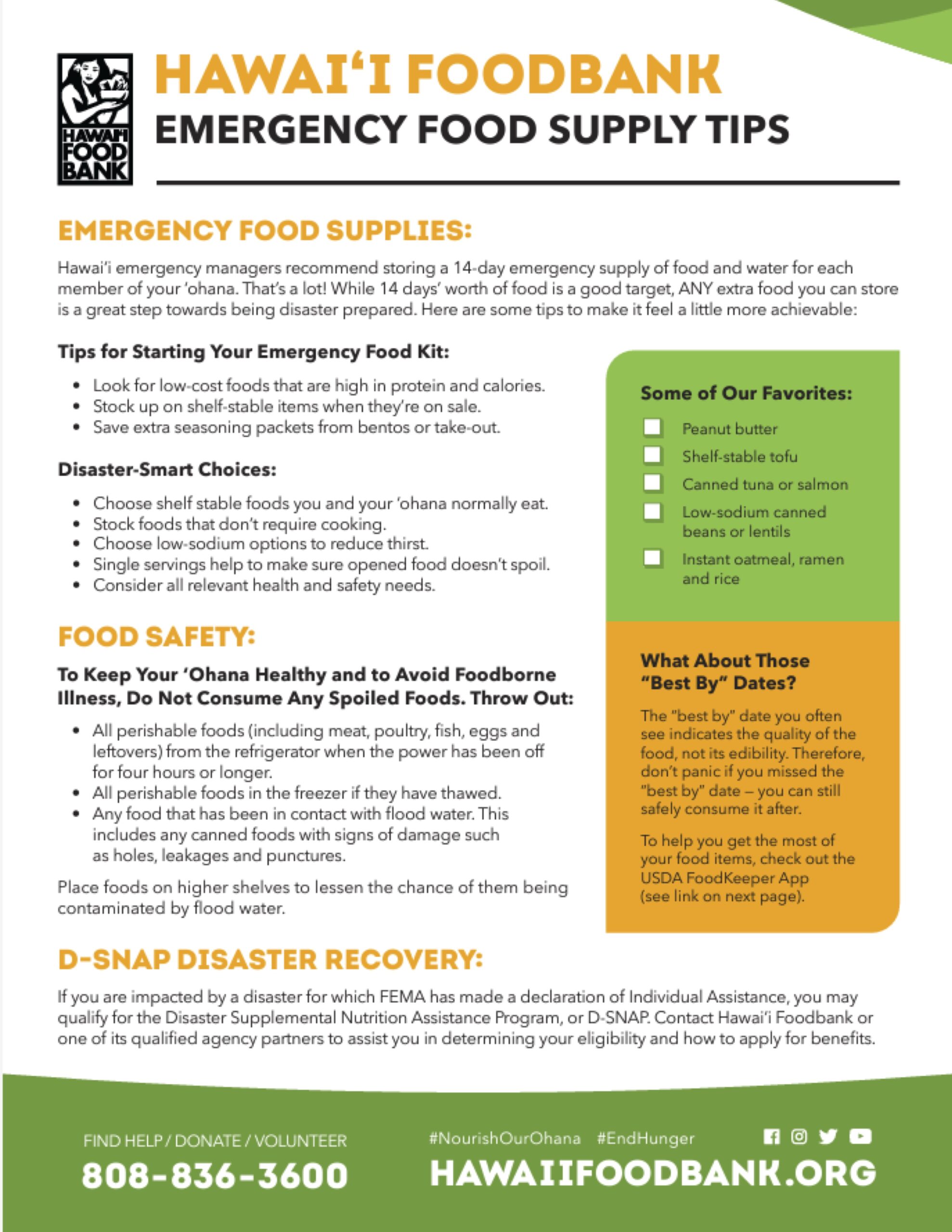Disaster Preparedness
in Hawai‘i
Preparedness is the responsibility of our entire community. We want everyone to be familiar with the risks we face and feel empowered to take a step forward to prepare for disasters.
The Challenges We Face
Hawai‘i is vulnerable to a variety of natural hazards, such as flash floods, fires, hurricanes, tsunamis, earthquakes, lava flows, extreme winds and more. In addition to these, there are other risks to account for, such as global pandemics or economic downturns, that could put our ‘ohana in similarly precarious conditions.
Risks and hazards are just one ingredient in the recipe for disasters. Some of the other factors at play include Hawai‘i’s high cost of living, our dependence on imported foods, and our remote geography. Understanding these risks is a crucial part of disaster preparedness in Hawai‘i, ensuring that our communities are well-equipped to handle potential emergencies.

Geography
Hawai‘i faces unique challenges to receiving outside aid and relief following a disaster due to its remote geography in the pacific. Over 95% of all supplies that come to Hawai‘i arrive on ships, which typically take between six and 10 days to arrive from the coast of California.
Dependence on imported foods
It is estimated that Hawaiʻi imports over 80% of its food in a ”just-in-time economy.” This means that any lasting disruptions of regular shipping could lead to severe food scarcity for our islands
Cost of living
The high cost of living in Hawai‘i makes it hard for families to regularly afford consistent supplies of safe, nutritious and sufficient food – let alone store a two-week supply of emergency food.
Collectively, these challenges place added responsibility on us, as a whole, to prepare ourselves for 14 days without external assistance. This is no small task. Our approach to disaster preparedness in Hawai‘i emphasizes community involvement and collective resilience.
The Kākou Approach
In a disaster, you, your ‘ohana and your community are your first and best help. Taking a few proactive steps to prepare can go a long way in helping you and your family survive and recover from a disaster.
How You Can Prepare Your ‘Ohana
Every ‘ohana that is prepared to survive on its own during a disaster helps the whole community by allowing help to go to those who need it most. Preparedness looks different for every person and every household, but everyone can do something to start their journey to being disaster prepared.
Strive to be Two-Weeks Ready
Hawai‘i emergency managers recommend storing a 14-day emergency supply of food, water and medicine for each member of your ‘ohana. That’s a lot! While 14-days’ worth of food is a good target, any extra food you can store is a great step towards being disaster prepared.
Download our Emergency Food Supply Tips to learn more and get started. >
Get Informed
One great way to help ensure the safety and well-being of you and your ‘ohana is to be well-informed and make a disaster plan. Here are some great free resources for learning about the risks we face and how to start creating a disaster plan for your ʻohana.
Support Hawai‘i Foodbank Disaster Preparedness and Response
Your contribution to disaster preparedness in Hawai’i, whether through volunteering skills or supporting with donations, is invaluable in fortifying our community against unforeseen disasters.
Donate
Online
Emergency Relief Fund
When disaster strikes, Hawaiʻi Foodbank is on the ground and ready to provide food assistance and emergency supplies. Your donation can help ensure we are always ready.
Give TodayVolunteer
With Us
You're Essential!
Do you have skills that may be useful during a disaster (e.g. HAM radio licensing, emergency shelter training, volunteer leadership, accounting, etc.)? We can use your help!
Sign Up
